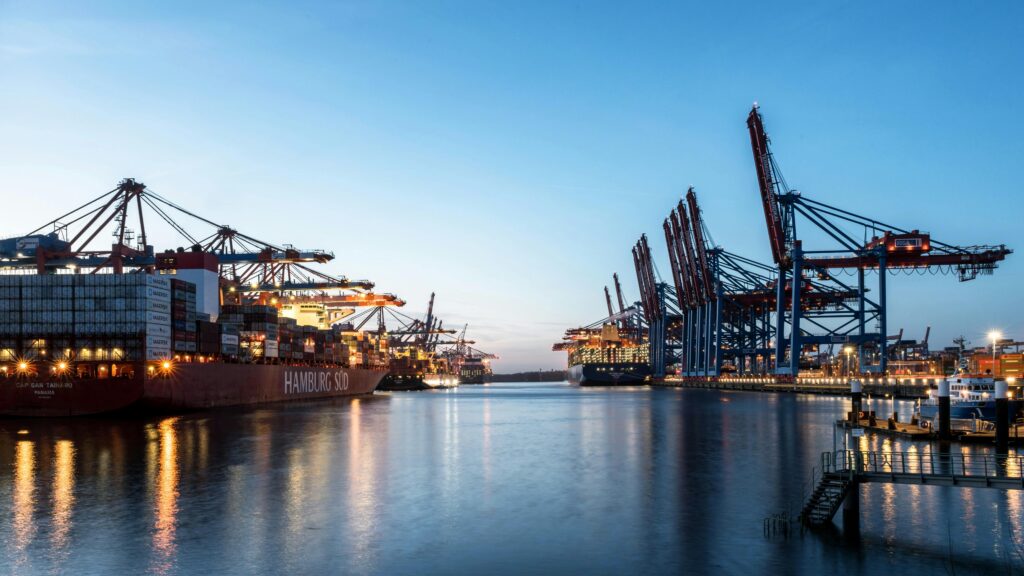The world as we know it is forever changed. COVID-19 has left death and destruction in its wake and plunged the global economy into catastrophic turmoil. We are rapidly approaching 500,000 dead globally and, according to a new forecast from McKinsey, are facing a global deficit of $30 trillion by 2023.
The implications for supply chain and logistics are considerable. For businesses – particularly those producing and distributing essential goods during the height of the pandemic – the last few months have been a painful lesson of acknowledging flaws in their supply chain. But, something else has emerged: optimism regarding new innovations and the opportunity to use the innovations to invent new processes. It took a global pandemic, unlike anything the world has seen in 100 years, to spur on another industrial revolution that will be defined by how countries adapt to a new era of trade.
This is the first blog of several in which I will explore the challenges, risks, opportunities and solutions that I see will drive global trade forward and bring the industry to a higher level of standardization and flexibility with the ultimate goal to future proof against another unexpected, but highly likely to happen, catastrophic global event.
COVID-19: A catalyst for innovation?
Trade and logistics are among the oldest industries in the world, tracing back to as early as 3000 BC when peoples in Mesopotamia and Egypt started to trade luxury goods, precious metals and grains. Since then, trade has revolutionized itself over and over again by important inventions and global political and economic shifts. The invention of the wheel and the container come to mind, but also the industrialization of the west and, in more recent times, the NAFTA agreement.
The passage of the North American Free Trade Agreement (NAFTA) in 1994 resulted in the elimination or reduction of many trade barriers, and motivated growth in trade globally. But this 26 year old status quo is now challenged again, as the world faces a new normal in the aftermath of the COVID-19 pandemic and the economic downturn it brought about. The industry sits on the precipice of another monumental shift.
COVID-19 exposed the frailty of the supply chain, sadly in matters of life and death. The healthcare sector was particularly affected. Production and distribution of masks and ventilators couldn’t meet the global demand. One result, according to the World Economic Forum, will likely be a shift from an overreliance on China for manufacturing.
The Council of Supply Chain Management Professionals (CSCMP) notes that logistics practitioners will need to become even more agile as they navigate recovery in the second half of 2020 and into 2021. There will be a need to adapt, change and overcome. Supply chains have been battered by COVID-19, and because they are inherently complex, they have been easily broken. Without the right technologies, supply chains are ill-equipped to adapt to the fast changing, COVID-19 and post-COVID-19 world.
On the precipice of a new dawn
Supply chain practices are ripe for digital disruption. In fact, it’s already been happening. According to Gartner, half of large companies will be using artificial intelligence, Internet of Things (IoT), and advanced analytics technology in their supply chains by 2023. Technology will be key to both managing this rough spot and jumpstarting supply chains once economies begin to go back to “normal”—whatever the new normal will be,” wrote Connected World, in exploring the supply chain challenges the consumer packaged goods industry faced in the early days of COVID-19, when it couldn’t keep basic necessities like toilet paper and other paper products on the shelf.
The symbiosis of hardware and software will be the driving factor. While decreasing lead times and production costs, increasing flexibility, and reducing warehouse costs benefit from greater adoption of software and hardware to automate, it’s the introduction of self-optimization, self-configuration, diagnosis, and then the cognitive systems to understand how to support workers and supply chain that drives better interoperability, data transparency, and end-to-end visibility, according to Ryan Ziegler a partner at Edison Partners.
With the market undergoing so much change, new technologies are positioned to change the way manufacturing, logistics, and supply chain operate – and the investment community is paying close attention. In a recent conversation, Julius Rüßmann of Earlybird Venture Capital was bullish on the maturation of the supply chain software market and that these technologies would bring about an “extreme fundamental change” in how we interact with sourcing strategies and supply chain management.
Fundamental change may cause alarm bells to go off, but one thing that won’t change is the need for human workers. Technology will complement workers, enabling greater productivity and a renewed focus on critical tasks that automation can’t handle. The skill set of supply chain workers may evolve – but workers won’t go away. In fact, Gartner data shows that 30 percent of operational warehouse workers will be supplemented – not replaced – with robots by 2023.
Embracing the opportunities ahead
Looking from today’s perspective it sometimes feels like not a whole lot has changed in logistics since the 1980’s. Sending goods from A to B remains a highly manual process, involving hours of manual work for each shipment, dozens of emails, and communication with more than 30 stakeholders.
The amount of manual work in this industry leaves customers with little transparency on pricing, the current status of their goods or even just an accurate estimated time of arrival (ETA). The reliability, e.g. the on-time performance of shipments and the accuracy of ETAs, is sub-par, just as the amount of communication needed between a logistics company and a customer.
The opportunity for those of us in the supply chain ecosystem is to fix logistics for the titans of industry so they can focus on manufacturing and creating great products. In the post-COVID-19 world, we believe there are three tenets that will dictate the future of supply chain management. In our next post, we will explore transparency, agility, and automating and how the unification of those three tenets will drive supply chain success and innovation in the new normal.







